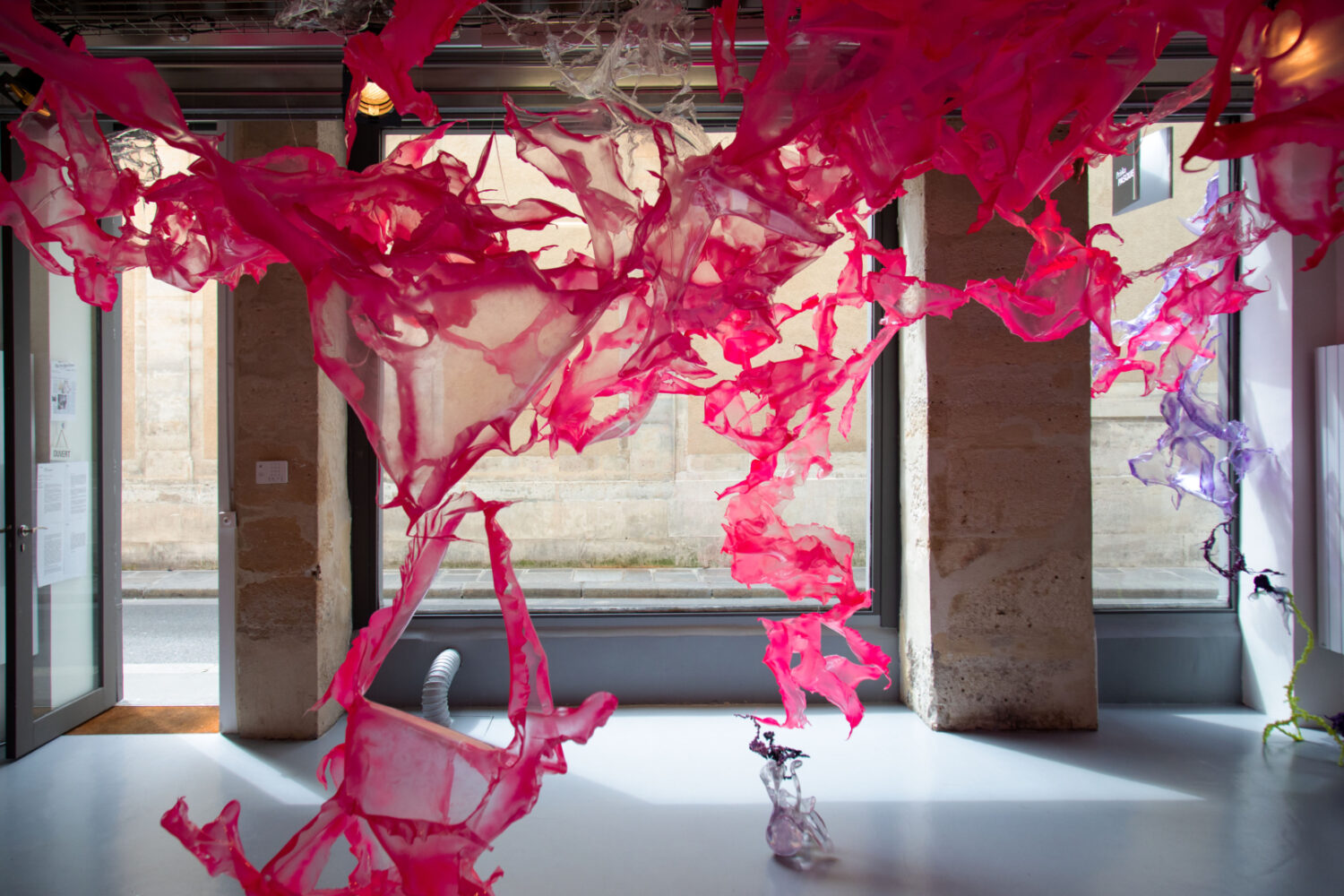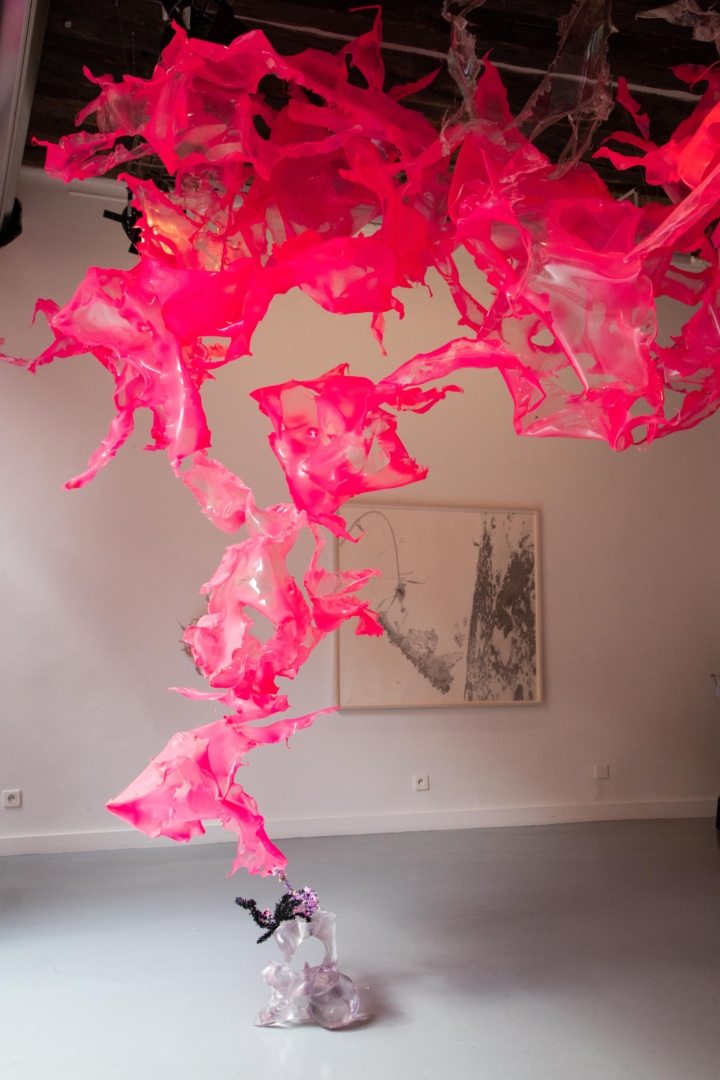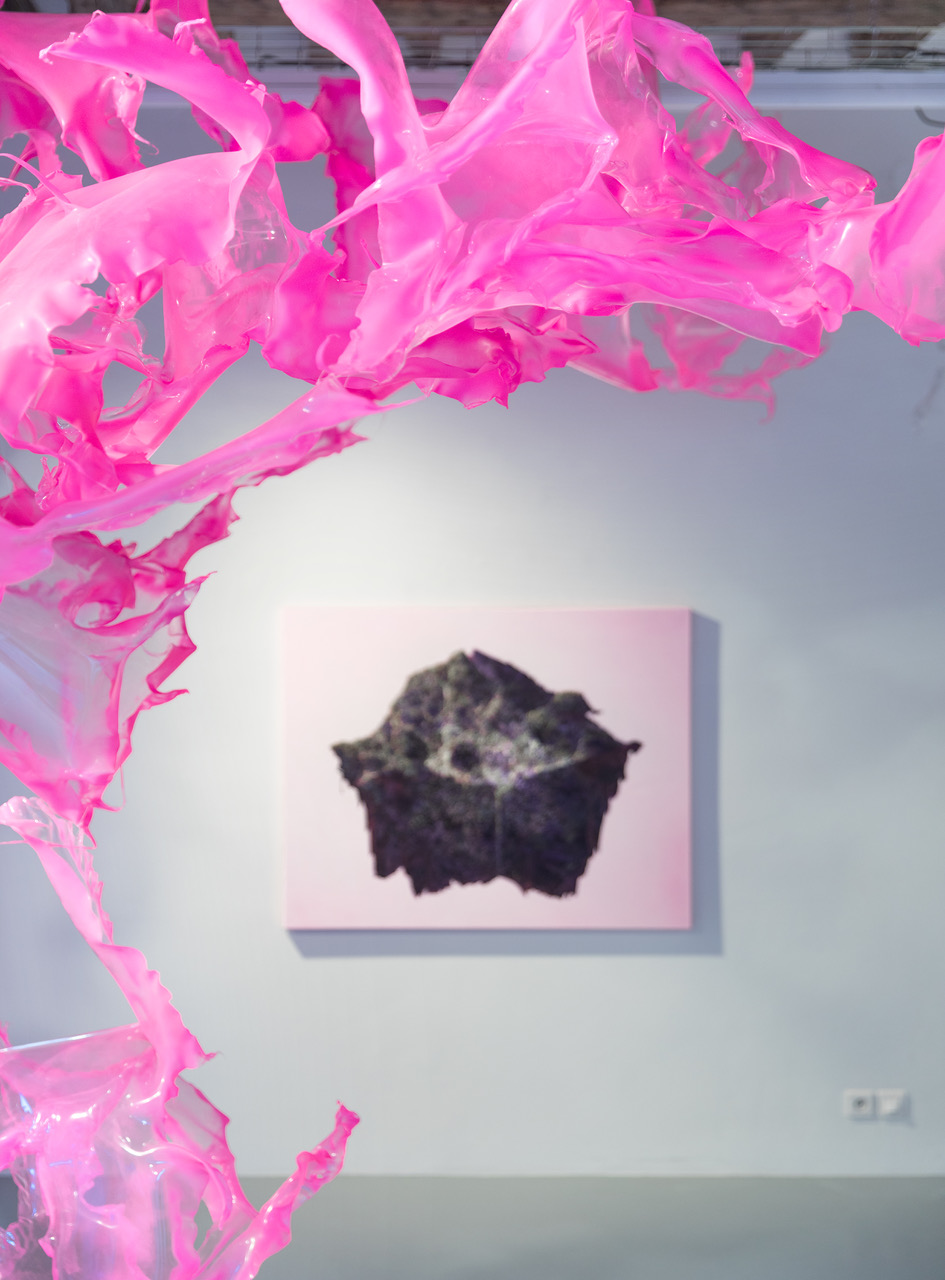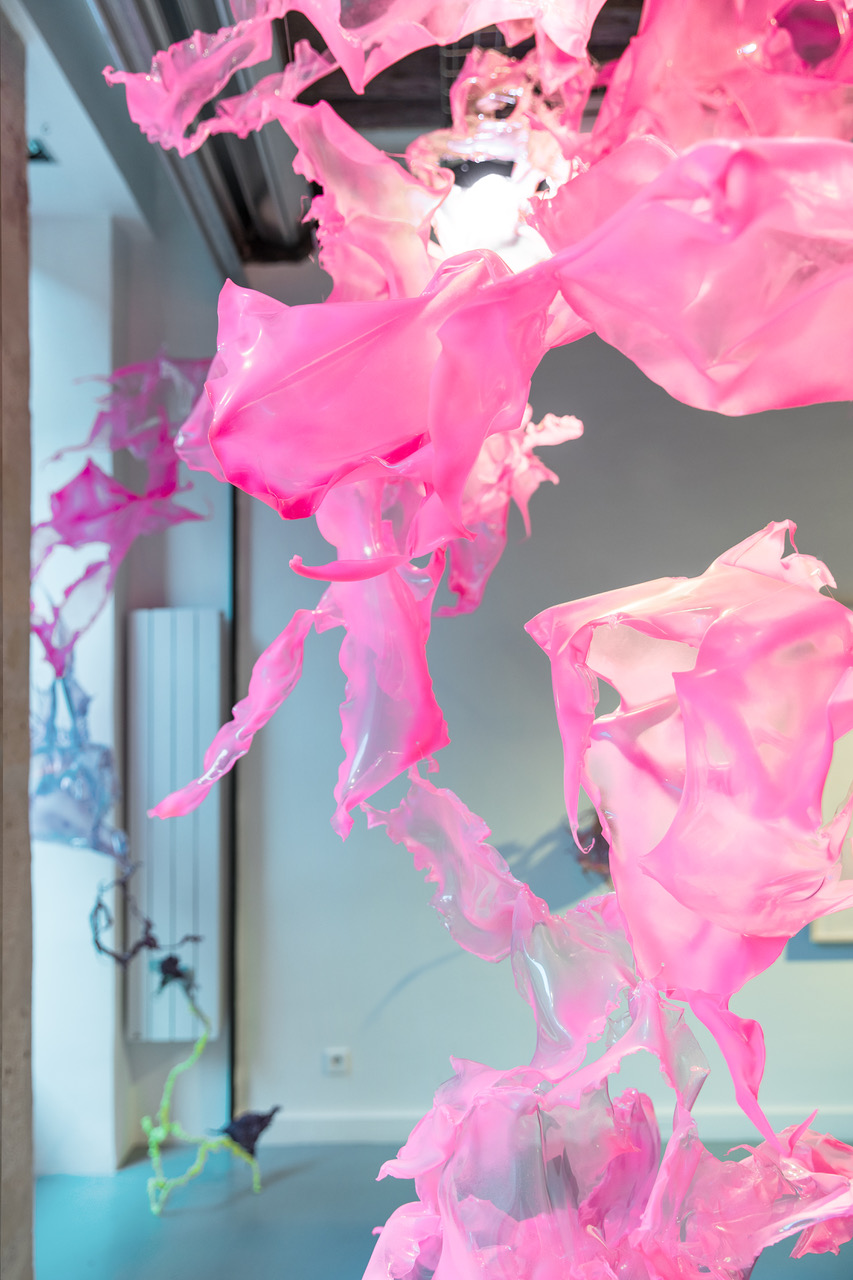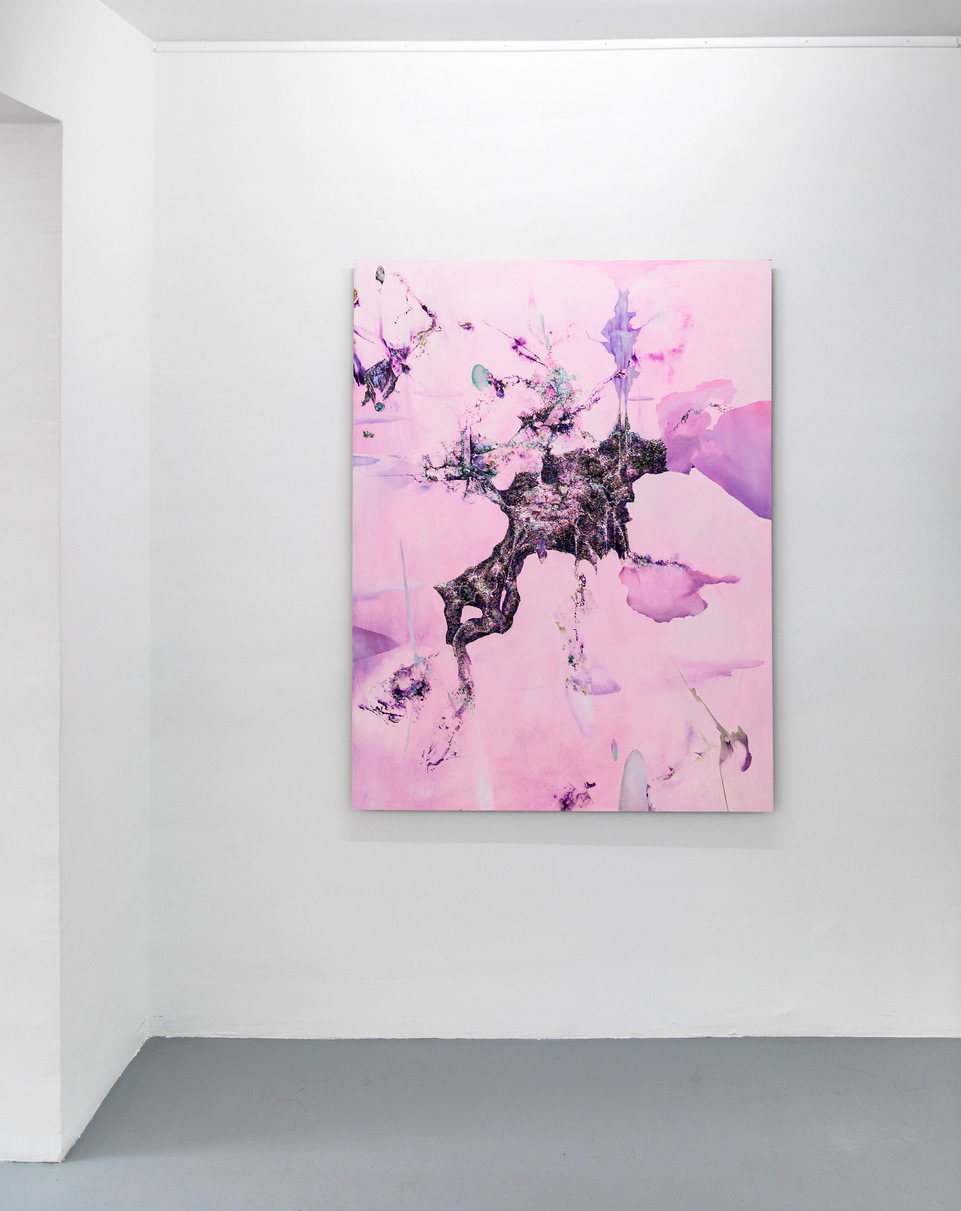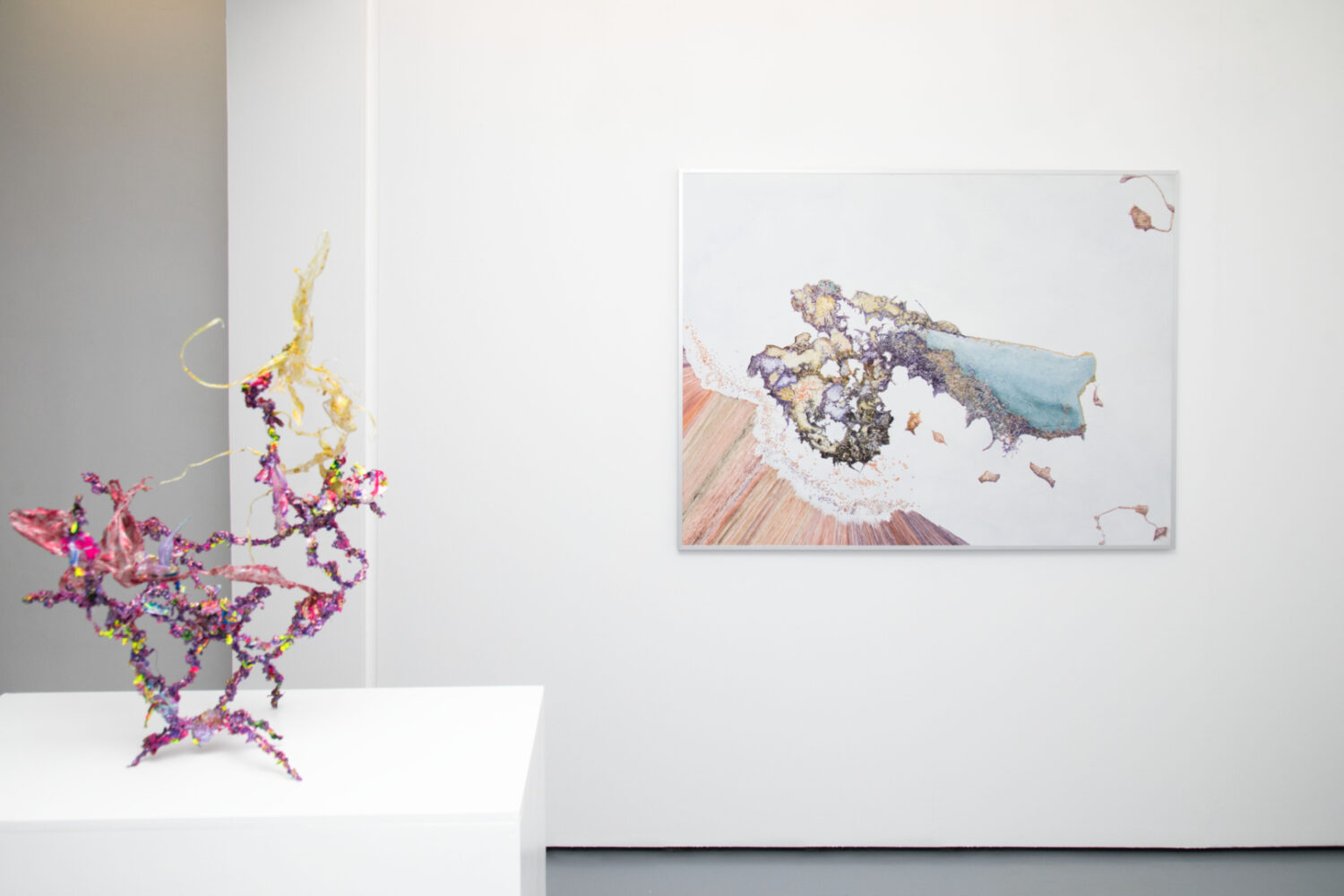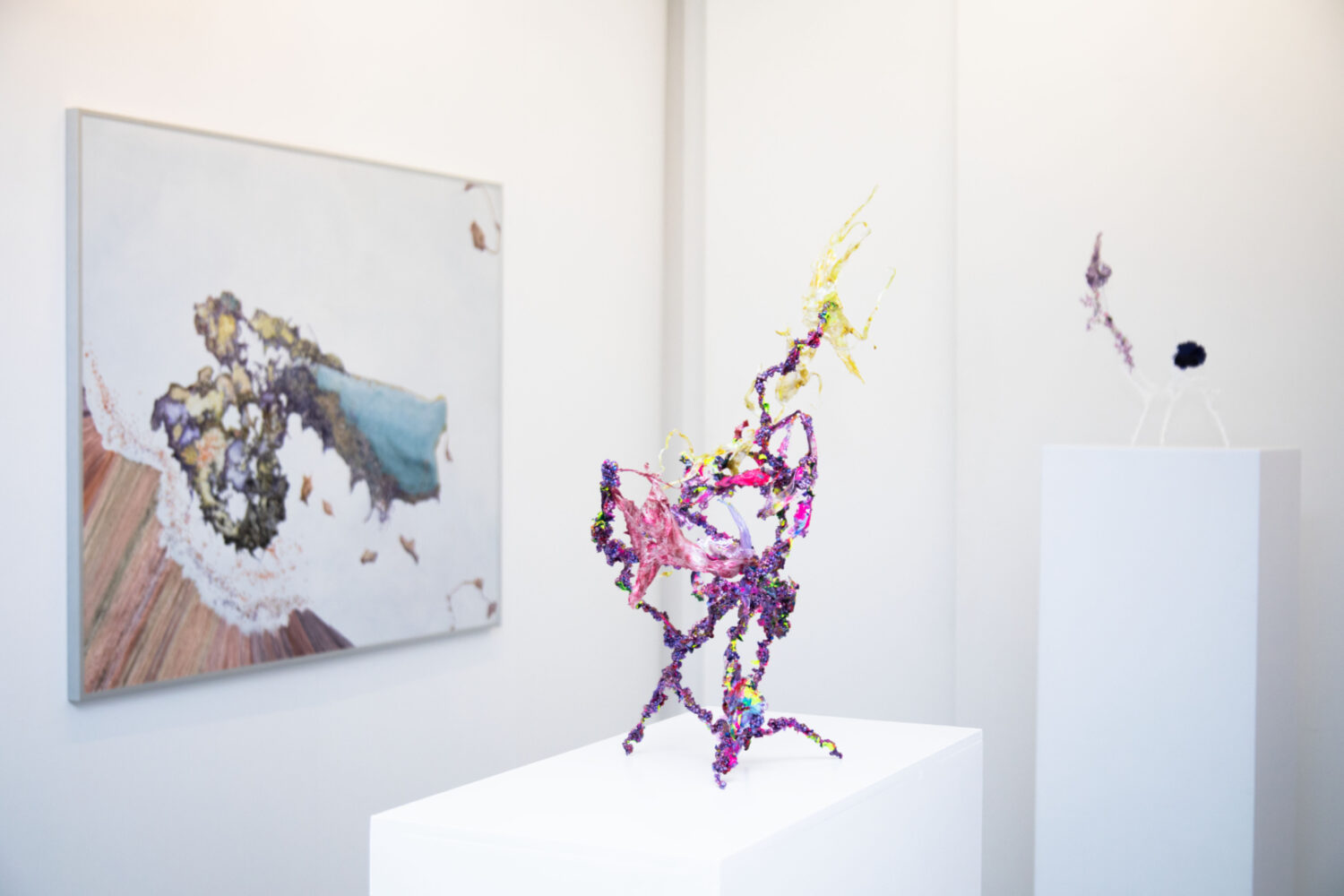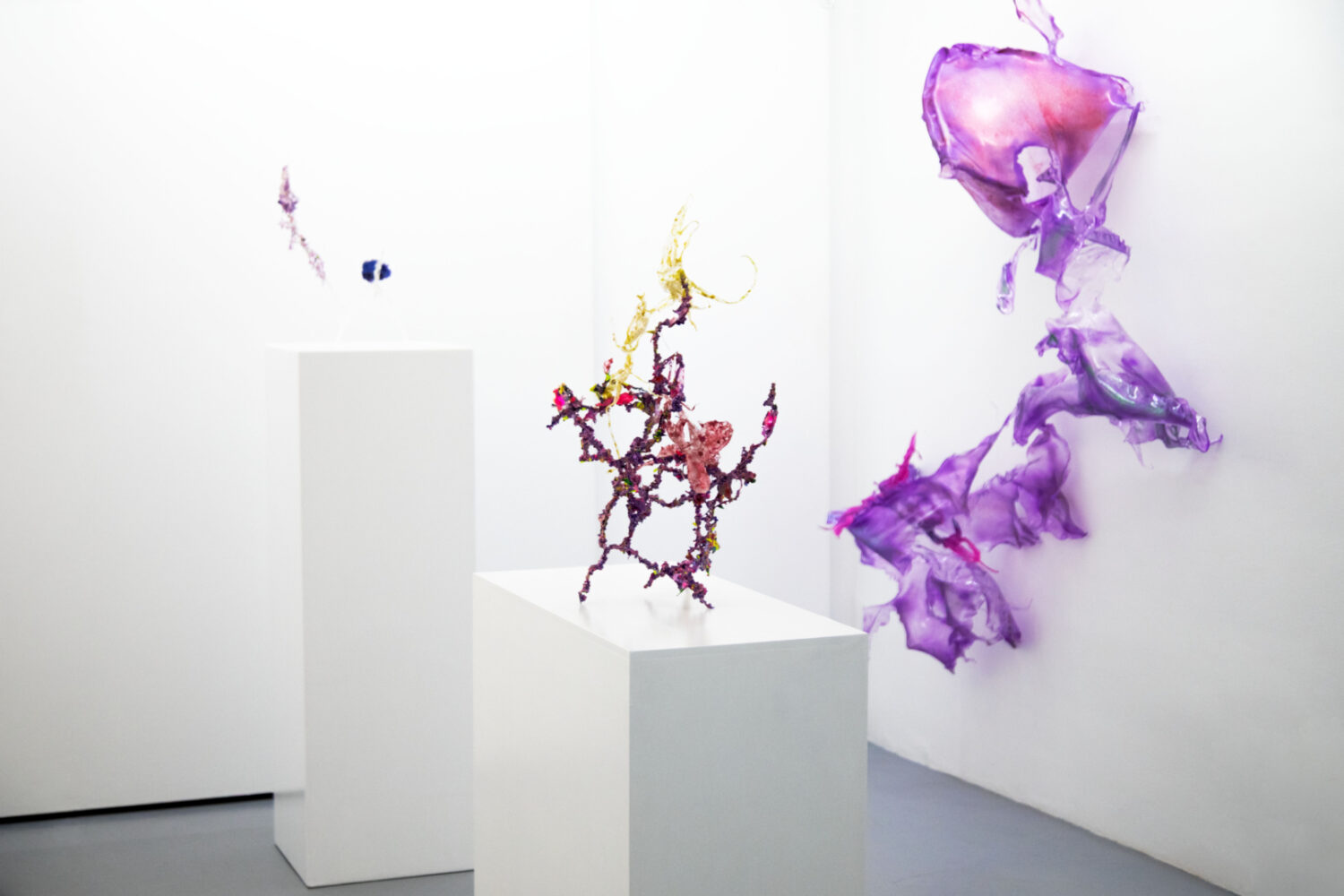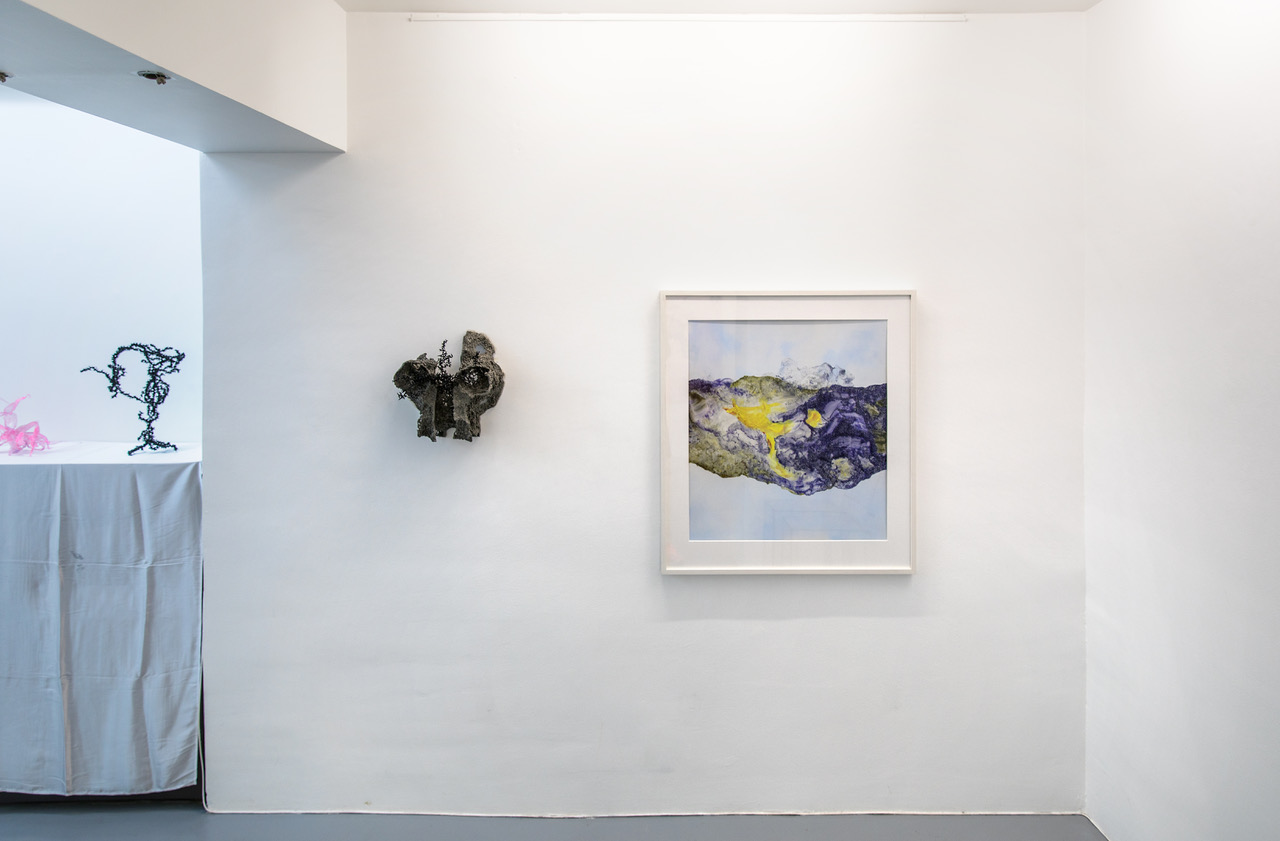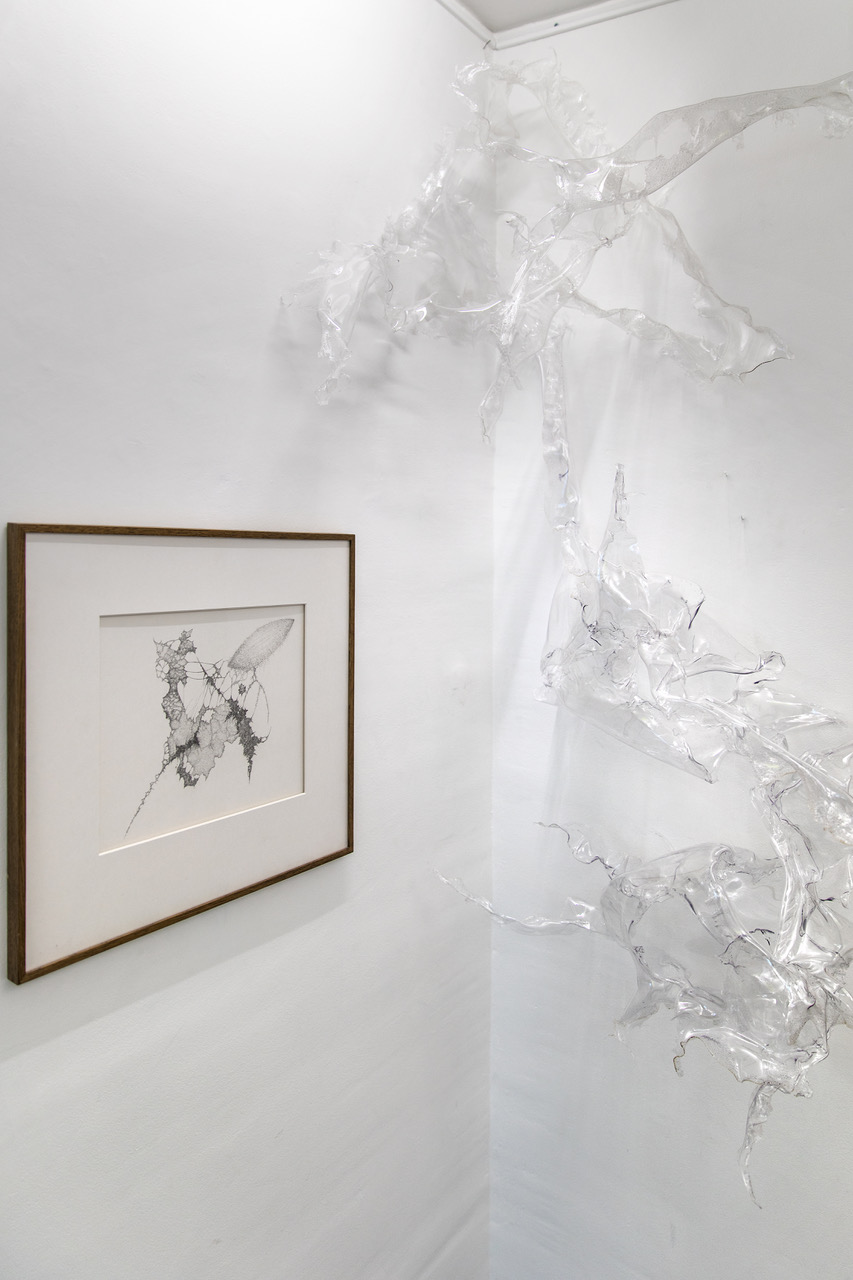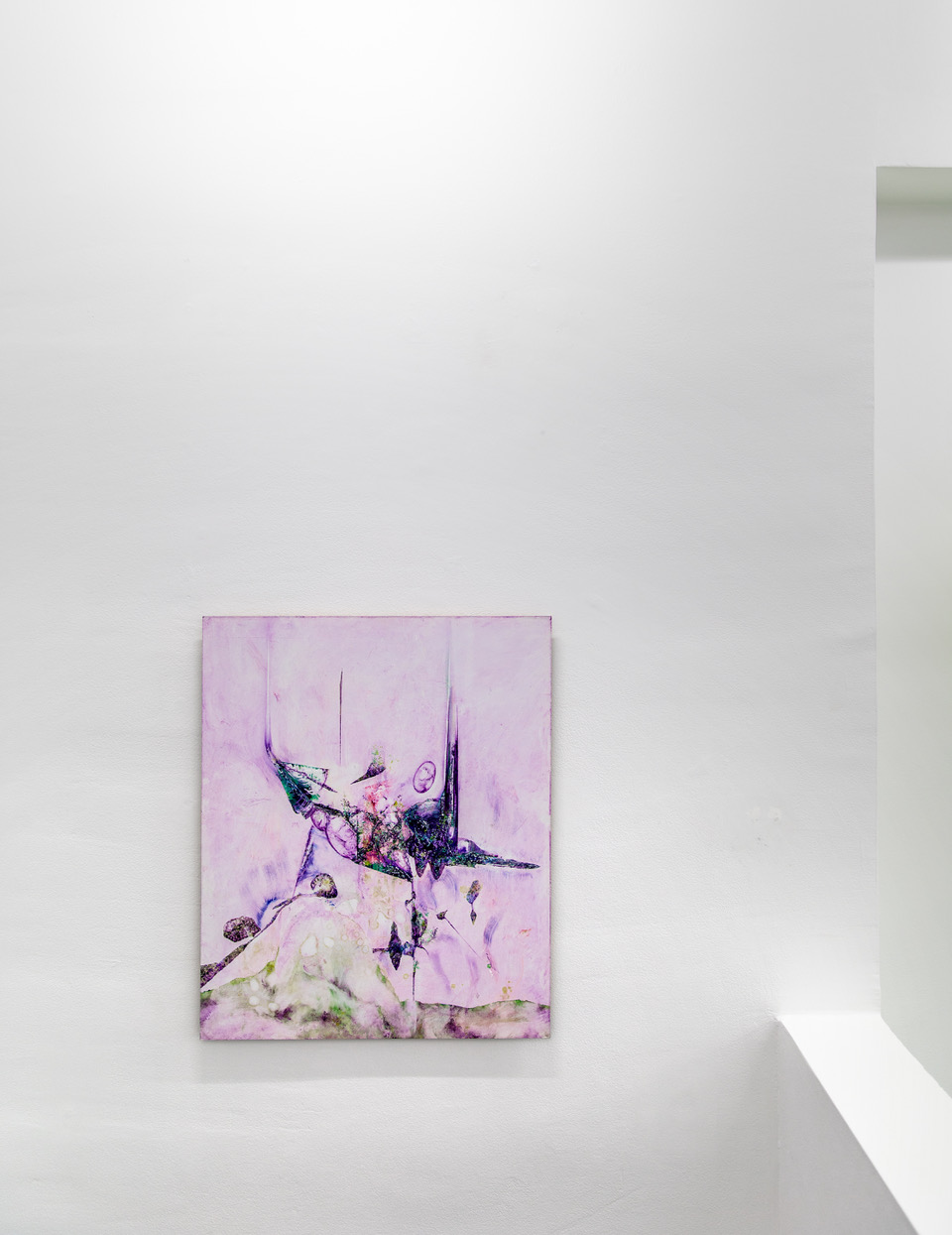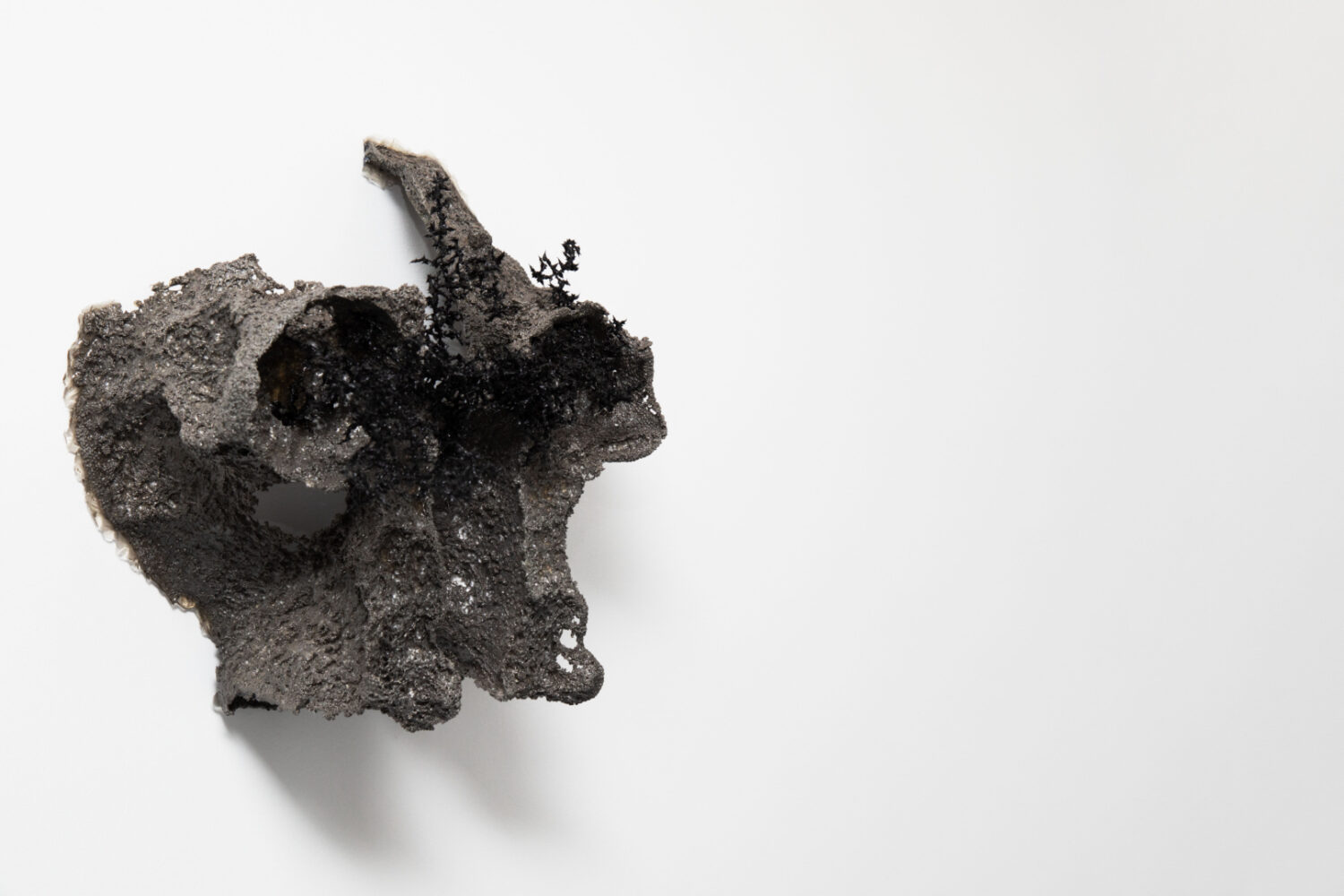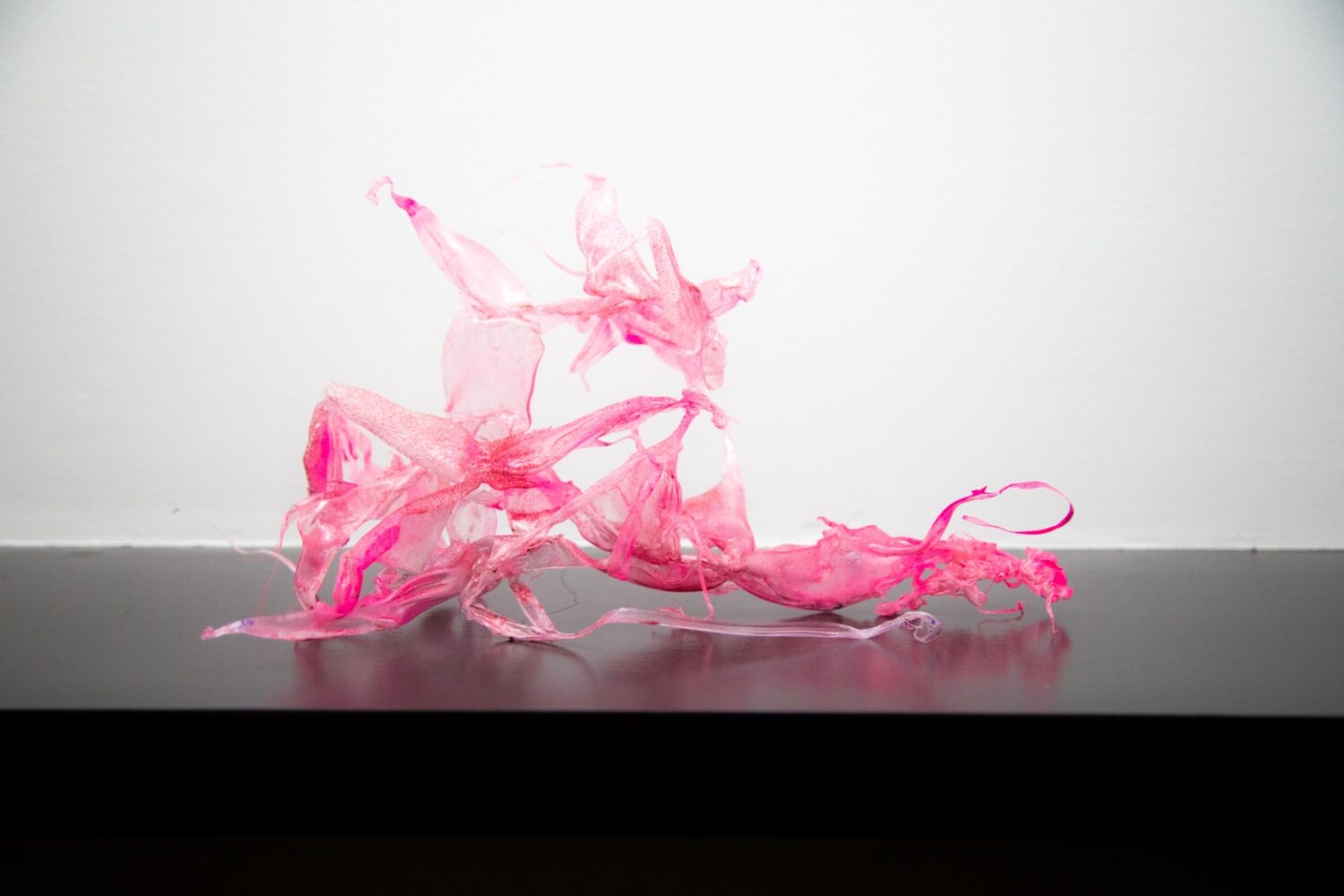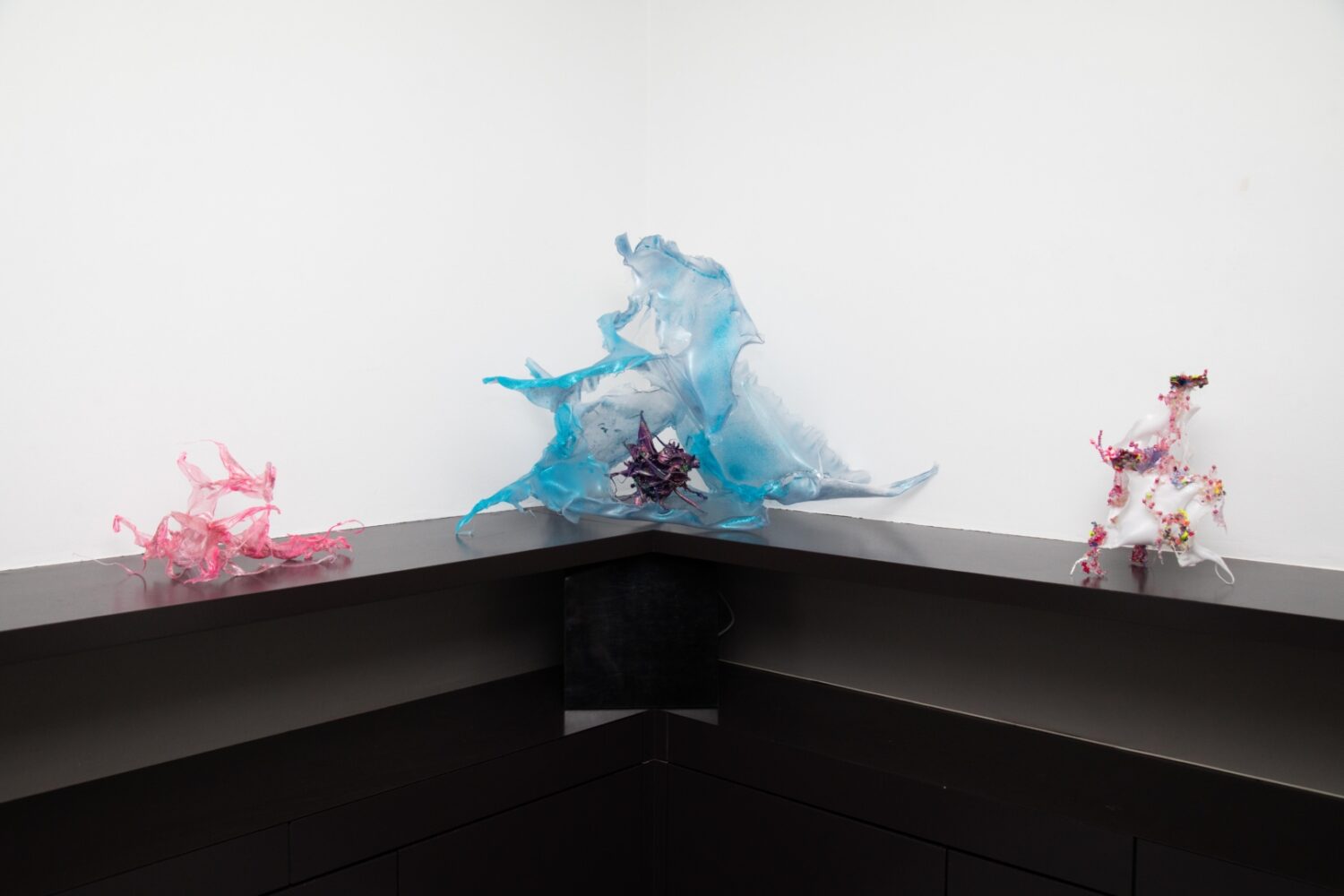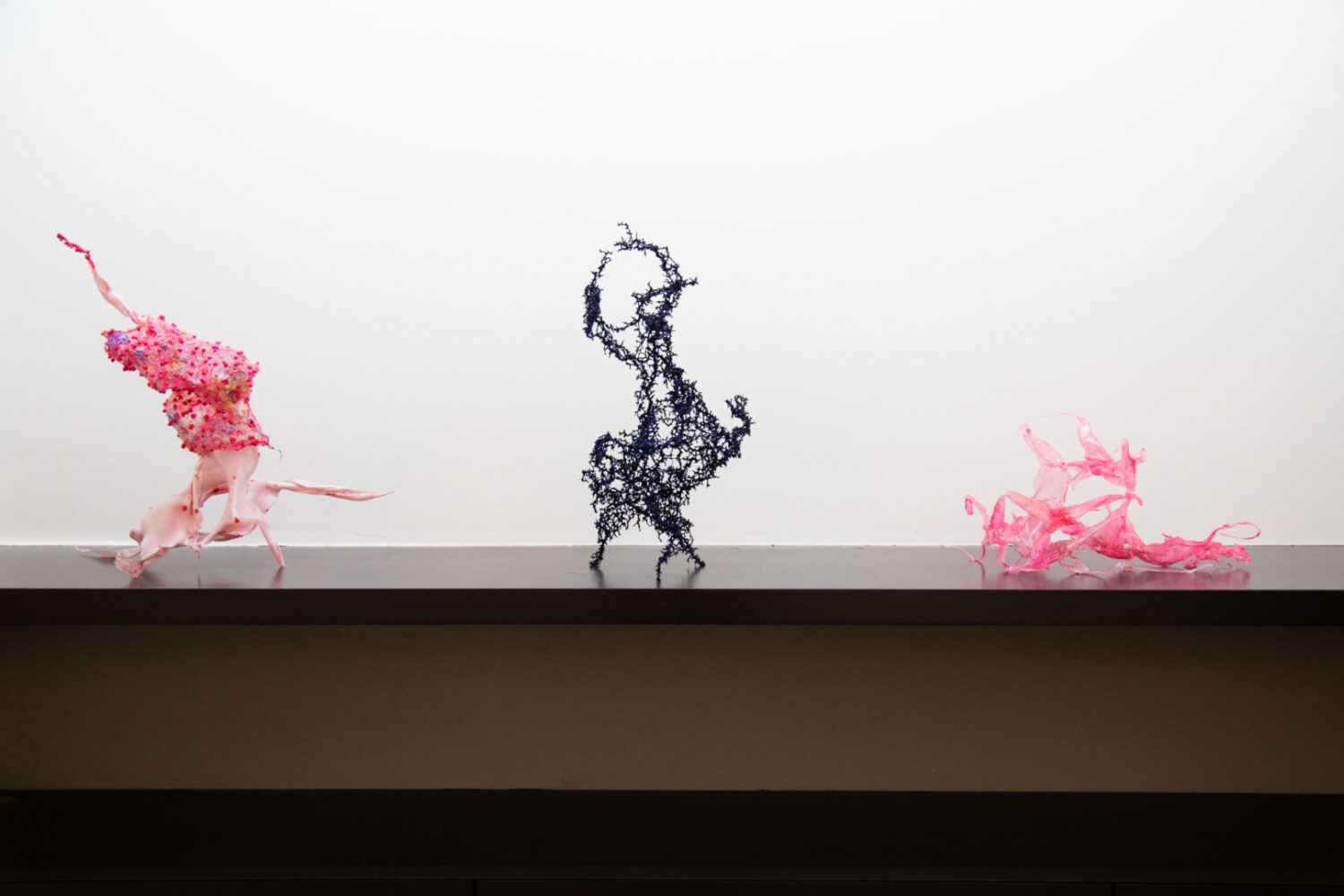PRISKA PASQUER PARIS
ALJOSCHA – PARADISE HYPOTHESIS
OPENING
11 March 2023
from 6 pm to 9 pm
12 March 2023 – 28 April 2023
PRISKA PASQUER PARIS is pleased to present “Paradise Hypothesis”, the second solo exhibition by the Ukrainian artist Olexiy Potupin (known as Aljoscha), and his first ever solo exhibition in France. After studying at the Düsseldorf Art Academy, where he now lives and works, he created a new genre, “Bioism”, that has taken the world by storm: Getty Center in Los Angeles, La Fondazione Sant’Elia in Palermo, Kupferstichkabinett Berlin, State Museum of Contemporary Art in Thessaloniki. His fantastic works in the fields of painting, installations and sculpture bring utopias to life through the biofuturistic unknown. Anchored in the here and now, they guide visitors from the present into the future – always full of hope and in search of “bonum humanum” (Thomas Aquinas), the good within people.
This search is the artist’s political mission; for him, art and activism go hand in hand: documenting his pacifist interventions with a camera, he strives to create an awareness of the uniqueness of each and every living being and to engender respect for the others. He recently took his delicate sculptures on tour to Ukraine shortly before the Russian invasion. The Mother Homeland statue in Kiev was built to commemorate the Soviet victory in the Second World War, and he stood opposed to it with his naked and defenceless body. Crossing his arms and raising them skyward, he confronted the statue’s bellicose pose with two pink acrylic creations. The photo documenting his protest was carried throughout the global press.
Paradise Hypothesis
In “Paradise Hypothesis”, living beings populate an entirely new form of gallery. The delicate objects, sculptures and landscape pictures have a strangely weightless quality and an air of nobility. Aljoscha places these in a paradisical yet fundamentally indefinable state that he endeavours to explore. Driven by the question as to how we view our biological future, he integrates philosophical, bioethical and scientific questions into his artistic contemplations. This served as the basis for his development of an anticipatory evolutionary theory: bioism. It can be understood as the manifesto under which Aljoscha subsumes all of his artistic work.
Utopian beings
His roots lie in painting, and oil paintings and delicate drawings are the starting point of his working process. Using these as a beginning, Aljoscha transfers the image concept into space and develops sculpture that in some respects appears to grow mesh-like from the image, an installation meandering through the room or transforming into a living embodiment of a sculptural presence. The use of the materials acrylic, silicone and aluminium makes the artificial nature of these objects clear to see, even as their lightness is suggestive of a natural mobility.
The “p-landscapes” and drawings showcase organic shapes whose origins lie in the inspiration the artist has drawn from synthetic biology. Starting from the centre of each image, organisms appear to be growing and metamorphosing outwards in all directions, creating an impression of three-dimensional depth. Even so, the frequently monochrome, contourless backgrounds allow the formations to float in an infinite and weightless sphere. Aljoscha describes his works as living embodiments of utopias. The first such fantastical future, the island of “Utopia”, was developed by the English scholar Thomas More some 500 years ago as a remedy for an exhausted society. He, too, located his vision far away from reality, in the middle of the global ocean.
Aljoscha’s larger “bioisms” are always created on location. He combines them with various smaller elements to intervene in local situations. His work “From Panspermia and Primordial Soup to Autopoiesis and Cognition” reflects Aljoscha’s fundamental scientific contemplation, which he translates into an extremely poetic language of design. It is here that one finds the extraordinary quality of his creations. The “primordial soup theory” defines amino acids as the fundamental building blocks of life. The “panspermia theory” hypothesises that comets transported organic molecules to Earth. The installation aims to render tangible the role of mutation as the engine of life. The translucent acrylic glass gives rise to a dynamic that brings the constant transformation of genetic information to the fore. The work rapidly evokes the fantastical thought that – following the conclusion of the exhibition – these being-like shapes will populate the entire gallery like some primeval mass.
Two new objects, #385 and #386, supplement the spatial intervention and the exploration of evolutionary theory. Aljoscha uses these to once again explore and represent the origins of life. These works have an appearance of snapshots of a story of creation: unknown species appear to be arising from these round, gleamingly reflective shapes. The reflective surfaces of the synthetic resin glass are reminiscent of the water that hosted the beginning of evolution. Water makes up as much as 60 percent of the human body – without it, we could not survive. The artist uses the glittery dust on these lifelike shapes as a form of stardust, transporting the action to distant galaxies. These are crystalline objects of colour literally created by Aljoscha by means of a painstaking process in which the acrylic paint is built up point by point.
Artistic interventions as futuristic messages
Again and again, Aljoscha uses his subversive sense of humour to locate his idiosyncratic shapes not only in public spaces or monuments, but also in the middle of nature. His interventions repeatedly emphasise the contrast between the status quo and artistic vision. They appear as a hopeful message from some better world of the future.
About Aljoscha
Aljoscha was born in 1974 in Lozova, a city in eastern Ukraine. For more than 20 years now, he has been living and working in Düsseldorf, where he studied under Konrad Klapheck at the Kunstakademie Düsseldorf. In 2006, he took part in the International Summer Academy of Fine Arts in Salzburg with Shirin Neshat. In 2008, he took first prize in sculpture at the XXXV. Premio Bancaja in Valencia, Spain, and won the sculpture award “Schlosspark 2009” in Cologne, Germany. In 2010 he organised the “bioism uprooting populus” installation project, which was sponsored by the Karin Abt-Straubinger Stiftung foundation in Stuttgart, Germany. In November 2018, Aljoscha represented Ukraine in the exhibition “1914/1918 – Not Then, Not Now, Not Ever” in the German Bundestag that was held to commemorate the 100th anniversary of the end of the First World War. His works are represented in countless private collections and museums, including the Getty Center in Los Angeles, Kupferstichkabinett Berlin, and the State Museum of Contemporary Art in Thessaloniki.
Dr. Wiebke Hahn
PRISKA PASQUER PARIS freut sich mit „Paradise Hypothesis“ die zweite Einzelausstellung des ukrainischen Künstlers Olexiy Potupin, bekannt als Aljoscha, zu realisieren und damit seine erste Soloschau in Frankreich. Nach seinem Studium an der Kunstakademie Düsseldorf, wo er heute lebt und arbeitet, eroberte er mit seiner neu geschaffenen Kunstgattung „Bioism“ die ganze Welt: Getty Center in Los Angeles, La Fondazione Sant’Elia in Palermo, Kupferstichkabinett Berlin, State Museum of contemporary Art in Thessaloniki. Seine fantastisch anmutenden Arbeiten aus den Bereichen Malerei, Installation und Skulptur vergegenwärtigen Utopien über das biofuturistische Unbekannte. Im Hier und Jetzt verankert führen sie die Besucher*innen von der Gegenwart in die Zukunft – stets hoffungsvoll, auf der Suche nach dem „bonum humanum“ (Thomas von Aquin), dem Guten im Menschen.
Diese Suche ist eine politische Mission des Künstlers, Kunst und Aktivismus gehen für ihn Hand in Hand: Mit seinen pazifistischen Interventionen, die er mit der Fotokamera dokumentiert, möchte er ein Bewusstsein für die Einzigartigkeit eines jeden Lebewesens und Respekt vor dem Anderen schaffen. Zuletzt reiste er mit seinen filigranen Skulpturen kurz vor der russischen Invasion in die Ukraine. Der Statue “Mutter Heimat”, die in Kiew zum Gedenken an den sowjetischen Sieg im Zweiten Weltkrieg errichtet wurde, stellte er seinen unbekleideten und schutzlosen Körper entgegen. Mit emporgestreckten, überkreuzten Armen konfrontierte er die kriegerische Haltung mit zwei rosafarbenen Acrylwesen. Das Foto, das die Aktion dokumentierte, ging weltweit durch die Presse.
Paradise Hypothesis
In „Paradise Hypothesis“ bevölkern Lebewesen einer neuartigen Gattung die Galerie. Die filigranen Objekte, Skulpturen und Landschaftsbilder erscheinen seltsam schwerelos und erhaben. Aljoscha verortet sie im paradiesischen, einem im Grunde doch unbeschreibbaren Zustand, den er zu ergründen sucht. Von der Frage getrieben, wie wir unsere biologische Zukunft sehen, bezieht er philosophische, bioethische und wissenschaftliche Fragen in die künstlerische Auseinandersetzung ein. Vor dieser Folie hat er eine antizipierende Evolutionstheorie, den „Bioismus“, entwickelt. Sie lässt sich im Sinne eines Manifests verstehen, unter dessen Programmatik Aljoscha seine gesamte künstlerische Arbeit subsumiert.
Utopische Wesen
Ursprünglich von der Malerei kommend stehen Öl-Bilder und filigrane Zeichnungen am Anfang seines Arbeitsprozesses. Von ihnen ausgehend hat Aljoscha die Bildidee in den Raum überführt und sein plastisches Werk entwickelt, das mal geflechtartig aus dem Bildträger zu wachsen scheint, installativ durch den Raum mäandert oder als wesenartige Formation eine skulpturale Präsenz entfaltet. Durch die Materialien Acryl, Silikon oder Aluminium wird die Künstlichkeit der Objekte offenbar, dennoch suggerieren sie durch ihre Leichtigkeit eine natürliche Beweglichkeit.
Die „p-landscapes“ und Zeichnungen zeigen organische Formen, zu denen der Künstler sich von der synthetischen Biologie inspirieren lässt. Vom Bildmittelpunkt ausgehend scheinen Organismen metamorphosenartig in alle Richtungen zu wuchern, wodurch der Eindruck einer dreidimensionalen Tiefe entsteht. Durch den oft einfarbigen, konturlosen Hintergrund schweben die Formationen jedoch in einer schwerelosen, unendlichen Sphäre. Aljoscha beschreibt seine Werke als wesenartige Utopien. Die erste derartige Zukunftsphantasie, die Insel „Utopia“, entwickelte der britische Gelehrte Thomas More vor rund 500 Jahren als Heilmittel für eine erschöpfte Gesellschaft. Auch er verortete seine Vision weit weg von der Realität, inmitten der Weiten des Weltmeeres.
Aljoschas größere Bioismen entstehen immer vor Ort. In Kombination verschiedener, kleinteiliger Elemente greift er in die örtlichen Gegebenheiten ein. Die Arbeit „Von Panspermie und Ursuppe zur Autopoiesis und Kognition“ spiegelt die tiefgehende, wissenschaftliche Auseinandersetzung Aljoschas wider, die er in eine hoch poetische Formensprache übersetzt. Hier liegt die besondere Qualität seiner Werke. Die „Ursuppen-Theorie“ definiert Aminosäuren als die Grundbausteine des Lebens. Die “Panspermie-Theorie” geht davon aus, dass Kometen organische Moleküle auf die Erde transportiert haben. Die Installation soll die Mutation als die Maschine des Lebens begreifbar machen. Durch das transluzente Acrylglas entsteht eine Dynamik, die die ständige Veränderung der genetischen Informationen hervorkehrt. Schnell erweckt die Arbeit so die fantastische Vorstellung, dass die wesenartige Formen nach Ausstellungsende gleich einer Urmasse die gesamte Galerie bedecken werden.
Zwei neue Objekte, #385 und #386, ergänzen die räumliche Intervention und die evolutionstheoretische Auseinandersetzung. Mit ihnen versucht Aljoscha einmal mehr den Ursprung des Lebens zu ergründen und darzustellen. Die Arbeiten wirken wie Momentaufnahmen einer Entstehungsgeschichte: Runden, glänzend-spiegelnden Formen scheinen unbekannte Spezies zu entwachsen. Die reflektierende Oberfläche des Kunstharzglases erinnert an Wasser, das den Beginn der Evolution bildet. Menschen bestehen zu 60 Prozent daraus, ohne Flüssigkeit können wir nicht überleben. Der Glitzerstaub auf den wesenartigen Gestalten, den der Künstler als Sternenstaub einsetzt, verortet das Geschehen in ferne Galaxien. Es sind kristalline Farbobjekte, die Aljoscha wortwörtlich erschafft, indem er in einem langwierigen Arbeitsprozess die Acrylfarbe Punkt für Punkt aufeinander aufbaut.
Künstlerische Interventionen als futuristische Botschaften
Immer wieder platziert Aljoscha mit subversivem Humor seine eigenwilligen Formen nicht nur auf öffentliche Plätze oder Denkmäler, sondern auch inmitten der Natur. Einmal mehr verdeutlichen seine Interventionen den Kontrast zwischen Status Quo und künstlerischer Vision. Sie wirken wie eine hoffnungsvolle Botschaft aus einer zukünftigen, besseren Welt.
Über Aljoscha
Aljoscha wurde 1974 im Osten der Ukraine in Lozova geboren. Seit mehr als 20 Jahren lebt und arbeitet er in Düsseldorf, wo er bei Konrad Klapheck an der Kunstakademie studierte. 2006 nahm er an der Internationalen Sommerakademie für Bildende Kunst in Salzburg bei Shirin Neshat teil. 2008 erhielt er den 1. Preis in Skulptur auf der XXXV. Premio Bancaja, Valencia, Spanien und 2009 den Skulpturpreis »Schlosspark 2009« in Köln. Im Jahr 2010 fand das Installationsprojekt »bioism uprooting populus« statt, welches durch die Karin Abt-Straubinger Stiftung in Stuttgart gefördert wurde. Im November 2018 vertrat Aljoscha in der Ausstellung »1914/1918 – Not Then, Not Now, Not Ever« im Deutschen Bundestag, welche zum 100. Mal an das Ende des 1. Weltkrieges erinnern soll, die Ukraine. Seine Werke sind in zahlreichen Privatsammlungen und Museen vertreten, darunter im Getty Center in Los Angeles, im Kupferstichkabinett Berlin sowie im State Museum of contemporary Art in Thessaloniki.
Dr. Wiebke Hahn
PRISKA PASQUER PARIS a le plaisir de présenter « Paradise Hypothesis », deuxième exposition personnelle de l’artiste ukrainien Olexiy Potupin, connu sous le nom d’Aljoscha, et son premier solo show en France.
Après ses études d’art à la Kunstakademie de Düsseldorf, où il vit et travaille aujourd’hui, Aljoscha a conquis le monde entier avec « Bioisism », une nouvelle forme d’expression artistique qu’on a pu découvrir au Getty Center de Los Angeles, à la fondation Sant’Elia de Palerme, au Kupferstichkabinett à Berlin ainsi qu’au State Museum of Contemporary Art à Thessalonique.
Que ce soit à travers la peinture, l’installation ou la sculpture, ses œuvres qui se situent aux frontières de l’irréel et du fantastique, matérialisent les utopies d’un inconnu biofuturiste.
Ancrées dans l’ici et le maintenant, elles conduisent les visiteurs du présent vers l’avenir, dans une quête emplie d’espoir du « bonum humanum » de Thomas d’Aquin (le bien dans l’homme).
Pour l’artiste, cette quête s’inscrit dans une démarche politique, art et activisme allant pour lui de pair :
Ses interventions pacifistes, qu’il documente avec son appareil photo, traduisent sa volonté de créer une prise de conscience de l’unicité de chaque être vivant et du respect de l’autre. La veille de l’invasion russe en Ukraine, il s’est rendu à Kiev. À la statue monumentale dédiée à la « Mère Patrie » et érigée à la gloire de l’armée soviétique durant la Seconde Guerre mondiale, il a opposé sa nudité et sa vulnérabilité, portant à bout de bras vers le ciel deux créatures en acrylique rose qu’il tenait entre ses mains croisées. L’image, relayée par de nombreux médias, a fait le tour du monde.
Paradise Hypothesis
Dans « Paradise Hypothesis », on voit des créatures diaphanes d’un genre nouveau peupler la galerie. Semblant flotter dans l’espace, ces objets, ces sculptures translucides, forment des paysages étranges et sublimes. Aljoscha les situe à un état édénique, échappant à toute description, qu’il cherche à élucider. Sa réflexion artistique, portée par la recherche d’une représentation de notre futur biologique, intègre des questions philosophiques, bioéthiques et scientifiques. C’est dans ce contexte qu’il a développé une théorie anticipatrice de l’évolution, le « bioisme ». Cette théorie peut être comprise comme un manifeste, dans lequel s’inscrit l’ensemble du travail artistique d’Aljoscha et en constitue le programme.
Des êtres utopiques
Venant à l’origine de la peinture, les travaux à l’huile et les dessins en filigrane constituent le début de son processus de travail. C’est à partir de là qu’Aljoscha a transposé l’idée de l’image dans l’espace et développé son œuvre plastique. Elle semble parfois s’échapper du support de l’image en s’enroulant sur elle-même, ou serpenter dans l’espace à la manière d’une installation, ou encore se déployer telle une présence sculpturale évoquant des êtres en formation.
Les matériaux utilisés (acrylique, silicone ou aluminium) révèlent le caractère artificiel de ces objets, mais leur légèreté suggère dans le même temps, la mobilité du vivant.
Les « p-landscapes » et les dessins représentent des formes organiques pour lesquelles l’artiste s’est inspiré de la biologie synthétique. Partant du centre de l’image, les organismes semblent proliférer dans toutes les directions, évoquant un processus de métamorphose, ce qui contribue à créer une impression de profondeur tridimensionnelle.
Grâce à un arrière-plan souvent monochrome et sans contours, les formations semblent flotter dans une sphère sans gravité et sans limites. Aljoscha décrit ses œuvres comme des entités utopiques.
Le premier à avoir imaginé un futur de ce type, est l’érudit britannique Thomas Moore qui, il y a 500 ans sur l’île d’« Utopia », l’envisageait comme remède face à une société épuisée, lui aussi situait sa vision loin de la réalité, quelque part sur Terre au milieu de l’immensité d’un océan.
Les « bioismes » les plus importants d’Aljoscha sont toujours créés sur place. En combinant différents éléments de petite taille, il intervient en fonction de l’espace qui lui est proposé. L’œuvre « De la panspermie et de la soupe primitive à l’autopoïèse et à la cognition » donne la mesure de sa profonde réflexion scientifique.
Il la traduit dans un langage formel d’une grande poésie et c’est là que réside la qualité particulière de ses œuvres. La « théorie de la soupe primitive » définit les acides aminés comme les éléments de base de la vie. La « théorie de la panspermie » part du principe que les comètes ont transporté des molécules organiques sur Terre. L’installation doit permettre de comprendre la mutation en tant que processus créateur de vie. Le verre acrylique translucide crée une dynamique qui met en évidence le changement constant des informations génétiques. En parcourant l’exposition, on est saisi par cette pensée fantastique et troublante qu’à son terme, ces formes semblables à des êtres vivants auront recouvert toute la galerie comme une masse originelle.
Deux nouveaux objets, #385 et #386, complètent l’intervention spatiale et le débat sur la théorie de l’évolution. Avec eux, Aljoscha tente une fois de plus d’élucider et de représenter l’origine de la vie. Ces œuvres semblent être des instantanés de l’histoire de la création : des formes rondes, brillantes et réfléchissantes semblent avoir donné naissance à des espèces inconnues. La surface réfléchissante du verre synthétique rappelle l’eau, qui constitue le début de l’évolution. Les êtres humains en sont composés à 60 %, et sans elle nous ne pouvons pas survivre. La poussière scintillante qui recouvre ces entités, symbolise pour l’artiste la poussière d’étoiles qui situe l’événement dans des galaxies lointaines. Ce sont des objets de couleur cristalline qu’Aljoscha crée littéralement en superposant point par point la peinture acrylique au cours d’un long processus de travail.
Des interventions artistiques comme messages futuristes
C’est toujours avec un humour subversif qu’Aljoscha place ses formes singulières non seulement sur des places publiques ou des monuments, mais aussi au milieu de la nature. Une fois de plus, ses interventions illustrent le contraste entre le statu quo et la vision artistique. Elles agissent comme un message d’espoir de l’avènement d’un monde meilleur.
À propos d’Aljoscha
Aljoscha est né en 1974 à Lozova, dans l’est de l’Ukraine. Depuis plus de 20 ans, il vit et travaille à Düsseldorf, où il a étudié avec Konrad Klapheck à la Kunstakademie. En 2006, il a participé à l’Internationale Sommerakademie für Bildende Kunst de Salzbourg auprès de Shirin Neshat. En 2008, il a reçu le premier prix de sculpture au XXXVe Premio Bancaja, Valence, en Espagne et en 2009 le prix de sculpture Schlosspark à Cologne. En 2010 a eu lieu le projet d’installation « bioism uprooting populus », qui a été soutenu par la fondation Karin Abt-Straubinger à Stuttgart. En novembre 2018, Aljoscha a représenté l’Ukraine à l’exposition « 1914/1918 – Not Then, Not Now, Not Ever » au Bundestag allemand, qui commémorait le centenaire de la fin de la Première Guerre mondiale. Ses œuvres sont représentées dans de nombreuses collections privées et musées, notamment au Getty Center de Los Angeles, au Kupferstichkabinett de Berlin et au State Museum of contemporary Art de Thessalonique.
Dr. Wiebke Hahn

